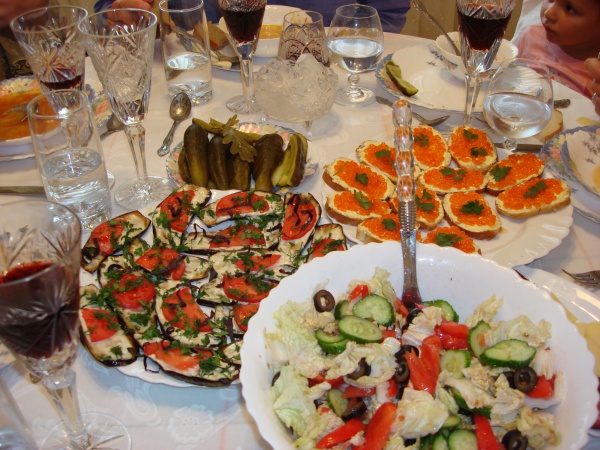Facts About Zakuski
Zakuski hold a prominent place in Russian cuisine, comprising an array of cold hors d'oeuvres, entrées, and snacks. This tradition extends across several Slavic-speaking countries and is typically enjoyed alongside shots of vodka or other alcoholic beverages. The term "zakuski" translates to "something to eat after" reflecting its role as a complement to drinks. Its roots can be traced back to early Rus' regions like the Novgorod Republic, influenced by Slavic, Viking-Nordic, and Oriental cultures.
The concept of zakuski shares similarities with the Swedish and Finnish brännvinsbord, which eventually evolved into the smörgåsbord, and the meze traditions of the Ottoman Empire and the Middle East. Unlike a buffet, zakuski are usually served directly at the dining table and are considered complete dishes rather than mere appetizers. Originally, they were a hallmark of Russian gentry households, prepared for unexpected guests. Over time, this practice permeated various social classes. Even during the Soviet era, space constraints led to serving zakuski as the first course of a celebratory meal.
Today, zakuski are a staple at banquets, dinners, parties, and receptions in countries that were part of the Russian Empire and some post-Soviet states. In Poland, they are known as zakąski. These appetizers initiate most feasts and feature a variety of delicacies such as cold cuts, cured fish, salads, aspic, pastries, pickled vegetables, cheeses, caviar, canapés, sandwiches, and breads. When guests arrive for a meal, they often find a spread of zakuski already laid out on the table, ready to be savored.

 Poland
Poland